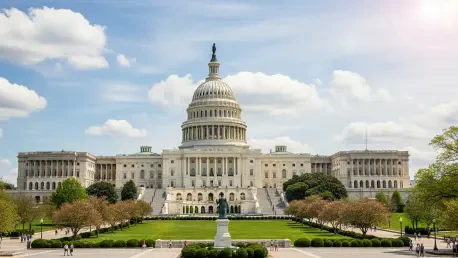The United States government has been grappling with a shutdown spanning over a month, affecting millions of citizens through unpaid workers, halted services, and delayed aid, and this crisis reached a critical juncture when a Democratic proposal to reopen the government alongside extending healthcare subsidies was flatly rejected by Republican leaders. What drives this deep partisan divide, and how do various political voices interpret the standoff? This roundup gathers insights from multiple perspectives across the political spectrum, including party leaders, moderate lawmakers, and policy analysts, to dissect the reasons behind the rejection and explore potential paths forward. The aim is to provide a comprehensive view of the deadlock and its broader implications for governance and public welfare.
Unpacking the Political Standoff Over the Government Shutdown
The current shutdown, now stretching into its 38th day, has exposed stark divisions between Democrats and Republicans over both immediate funding needs and long-term policy goals. Democrats offered a plan to pair the reopening of the government with a one-year extension of healthcare subsidies, a move intended to address both urgent and systemic issues. However, Republican leadership dismissed this as untenable, insisting on separating the shutdown resolution from other legislative priorities. Analysts note that this standoff reflects not just a budgetary disagreement but a fundamental clash over the role of government in social programs.
The impact of this gridlock is profound, disrupting airport operations, leaving federal employees without pay, and delaying critical food assistance to vulnerable populations. Voices from both sides of the aisle have expressed concern over these real-world consequences, yet solutions remain elusive. Political commentators suggest that the shutdown serves as a litmus test for how far each party is willing to push its agenda, even at the cost of public hardship. This roundup delves into why Republicans rejected the Democratic deal, examining the stakes of healthcare policy and the undercurrents of bipartisan efforts.
Beyond the immediate crisis, this deadlock highlights deeper partisan rifts that could shape future negotiations. Policy experts argue that the outcome of this standoff may set a precedent for how political leverage is wielded in times of urgency. By compiling diverse opinions, this piece aims to shed light on the motivations behind the rejection, the human toll of the crisis, and the potential for compromise amid entrenched positions.
Diving Into the Core Issues of the Shutdown Deal
The Democratic Offer and Republican Pushback
Democratic leaders proposed a compromise to simultaneously address the shutdown and extend expiring healthcare subsidies for a year, viewing it as a balanced approach to urgent needs. Senate Republican leaders, however, labeled the proposal a nonstarter, arguing that reopening the government must take precedence over unrelated policy debates. One senior Republican figure emphasized that mixing issues muddies the waters, delaying a swift resolution to the shutdown crisis.
Political strategists point out that this rejection stems from a broader Republican stance against expanding government spending on social programs without stringent conditions. In contrast, Democratic voices contend that separating the issues risks sidelining critical healthcare protections for millions, especially with subsidies set to lapse soon. This fundamental disagreement over legislative priorities reveals an ideological battle that extends far beyond the current shutdown.
Analysts from think tanks across the spectrum note that linking shutdown resolutions to policy riders is a long-standing tactic in Washington, often used to force action on stalled issues. While some see the Democratic offer as a pragmatic olive branch, others view the Republican refusal as a calculated move to avoid setting a precedent for future negotiations. This divide in interpretation underscores the complexity of finding common ground in a polarized landscape.
Human Toll of the Prolonged Shutdown Crisis
The shutdown’s effects are acutely felt by everyday Americans, with disruptions ranging from airport delays to unpaid federal workers struggling to make ends meet. Reports indicate that millions are also facing delays in food aid, exacerbating hardship for low-income families. Bipartisan acknowledgment of these harms exists, with some Republican leaders urging a quick end to what they call “weeks of misery” for affected citizens.
Policy observers highlight that the mounting public frustration is placing significant pressure on both parties to resolve the crisis, though their approaches differ sharply. While Democrats push for a comprehensive deal, Republicans advocate for a narrower focus on funding alone. Public opinion, as reflected in recent polls, appears to lean toward frustration with the lack of progress, with many blaming partisan posturing for the ongoing suffering.
Independent commentators warn that prolonged inaction risks a severe backlash that could reshape voter perceptions ahead of future elections. The human cost, they argue, is becoming a rallying cry for accountability, pushing lawmakers to reconsider their rigid stances. Whether this pressure will translate into a breakthrough remains uncertain, but it is a critical factor in the ongoing debate.
Healthcare Subsidies as the Central Roadblock
At the heart of the deadlock lies the issue of Affordable Care Act subsidies, which are due to expire in January if not extended. Democrats argue that securing these subsidies is non-negotiable, citing their importance for healthcare access in numerous states. Regional impacts are particularly pronounced in areas with high uninsured rates, where voters have voiced growing concern over potential coverage losses.
Republican perspectives, however, emphasize a reluctance to commit to any healthcare vote until the government is fully operational. Some party strategists suggest that addressing subsidies now could be seen as capitulating to Democratic demands, a risk they are unwilling to take. This hesitation, according to healthcare policy analysts, may have long-term political consequences if access issues escalate into a broader public crisis.
Neutral observers question whether separating healthcare from shutdown talks is a feasible strategy, given the intertwined nature of budget and policy priorities. They argue that dismissing the linkage outright could alienate key voter demographics who prioritize affordable care. The debate over subsidies, therefore, is not just a policy sticking point but a potential turning point in how each party positions itself on social welfare.
Bipartisan Efforts Amid Leadership Gridlock
Amid the impasse at the leadership level, a group of moderate lawmakers from both parties has been working on alternative plans to fund critical government functions temporarily. Their proposals focus on targeted bills to support essentials like veterans’ programs and food aid, extending overall funding for a limited period. However, these plans lack firm commitments on healthcare subsidies, a gap that has drawn skepticism from many Democrats.
Comparing these grassroots efforts to the hardline positions of party leaders reveals a disconnect within both camps. Moderates express frustration over the lack of flexibility, with some suggesting that incremental steps could rebuild trust. Yet, political analysts caution that without addressing core issues like healthcare, such compromises may only delay inevitable confrontations rather than resolve them.
Speculation abounds on whether these bipartisan initiatives can gain traction or if they merely expose internal fractures within the parties. Some Capitol Hill watchers believe that a successful moderate push could shift the narrative toward collaboration, while others see it as a long shot given the entrenched leadership stances. The outcome of these efforts remains a key area to watch in the unfolding crisis.
Key Lessons From the Shutdown Negotiation Breakdown
The rejection of the Democratic proposal by Republicans offers several critical takeaways, starting with the firm insistence on decoupling healthcare policy from shutdown resolution. This stance reflects a strategic choice to prioritize immediate funding over broader legislative deals, a decision that has deepened the partisan rift. Additionally, the dire human cost of the shutdown—from unpaid workers to disrupted aid—has emerged as a unifying concern, though it has not yet spurred agreement on terms.
Another lesson lies in the faltering attempts by moderates to broker a compromise, which, while promising, struggle to address all stakeholder demands. Policy experts suggest actionable steps forward, such as passing incremental funding bills to alleviate immediate suffering while establishing a clear timeline for healthcare discussions. This phased approach could help rebuild confidence between the parties, though it requires concessions that neither side has yet shown willingness to make.
Monitoring upcoming test votes and public statements from key figures will be crucial in gauging whether a resolution is near or if further entrenchment lies ahead. Political observers also recommend tracking public sentiment, as growing frustration could force lawmakers’ hands. These indicators will provide insight into whether the current deadlock is a temporary hurdle or a sign of deeper systemic challenges.
Reflecting on the Future of Partisan Deal-Making
Looking back, the Republican rejection of the Democratic shutdown deal illuminated a profound divide that mirrored larger governance struggles in a polarized environment. The refusal to link healthcare subsidies with government reopening, coupled with the tangible harms of the shutdown, underscored the high stakes of partisan negotiations. This standoff became a stark reminder of how ideological battles can overshadow urgent public needs.
Moving forward, actionable steps emerged as vital considerations, such as fostering dialogue through smaller, confidence-building measures like temporary funding agreements. Establishing bipartisan task forces to tackle healthcare policy independently of crisis-driven negotiations was also floated as a way to prevent similar deadlocks. These ideas aimed to shift the focus from leverage to collaboration, offering a potential blueprint for navigating future crises.
Another key takeaway was the need to prioritize public communication, ensuring that citizens understood the reasons behind delays and the efforts underway. Encouraging transparency in legislative processes could help mitigate backlash and rebuild trust. As this chapter closed, the hope was that lessons learned would pave the way for more constructive deal-making, avoiding the gridlock that defined this particular shutdown saga.









